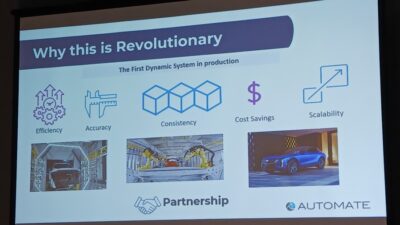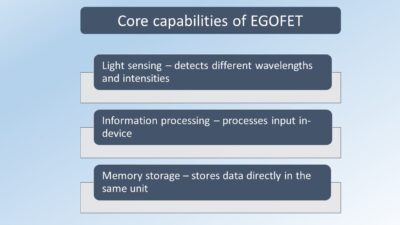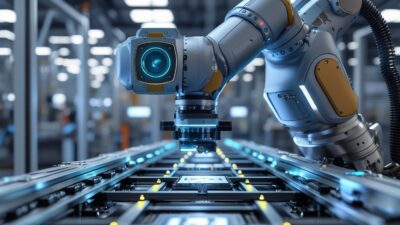While the ability of a computer to look at a person’s face and compare it to one in a database is fairly common, current technology can go much farther. A system can now look at an individual and make some conclusions about that person, and even his or her state of mind. Omron has developed a group of facial recognition products under the name Okao Vision, borrowing the Japanese word for...
Machine Vision, May ’09, Control Engineering
Other articles in the May 2009 Control Engineering North American print edition supplement:- 415 Parts Seen – Motion and Vision Combine to Detect Flaws – Intelligent Vision Stops Bypass of Quality Control
While the ability of a computer to look at a person’s face and compare it to one in a database is fairly common, current technology can go much farther. A system can now look at an individual and make some conclusions about that person, and even his or her state of mind.
Omron has developed a group of facial recognition products under the name Okao Vision, borrowing the Japanese word for “face.” Omron began by simply finding faces in an image, but that was only a start. “From there it got more complicated,” says Sarah Hall, corporate communications for Omron. “We have found ways to determine gender and age in the last couple of years.”
One recent development is the Smile Scan capability. This new system can watch individuals and see if they’re smiling. If you run a fast-food restaurant, you can make sure your servers look pleasant. While that may seem almost trivial, it is a valuable training tool, and represents some remarkable engineering.
Creating the 3D mask is a three step process.
Hall explains: “Facial recognition technology is based on a 3-D mask that is fitted over an image of a face. It’s looking at wrinkles and movement around the lips and eyes, so it operates differently than most machine vision applications. The fundamentals are the same in that it’s looking at shapes and colors, but in terms of the actual process, we’re using a different approach.”
Does it work? Devices tested in Japan to judge the age of tobacco or alcohol buyers were generally as good or better than human observers. Still, determining if the subject is 17 or 22 years old is easier than spotting the difference between 53 and 58.
The computer is able to determine if a subject is happy, distracted, sleepy, or in pain. “We’re trying to expand the range of emotions that it’s able to analyze, but it’s quite difficult,” Hall adds. “You could be squinting in pain or squinting in joy, and it looks the same to the computer.”
Read more



